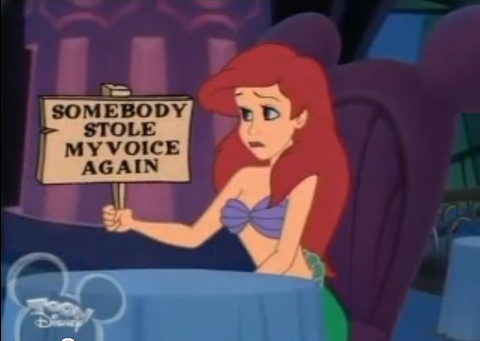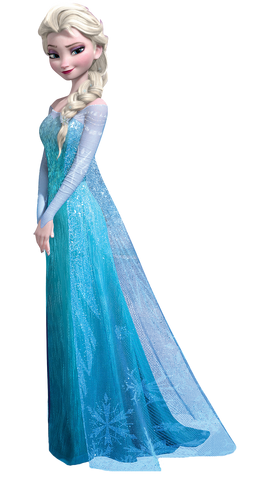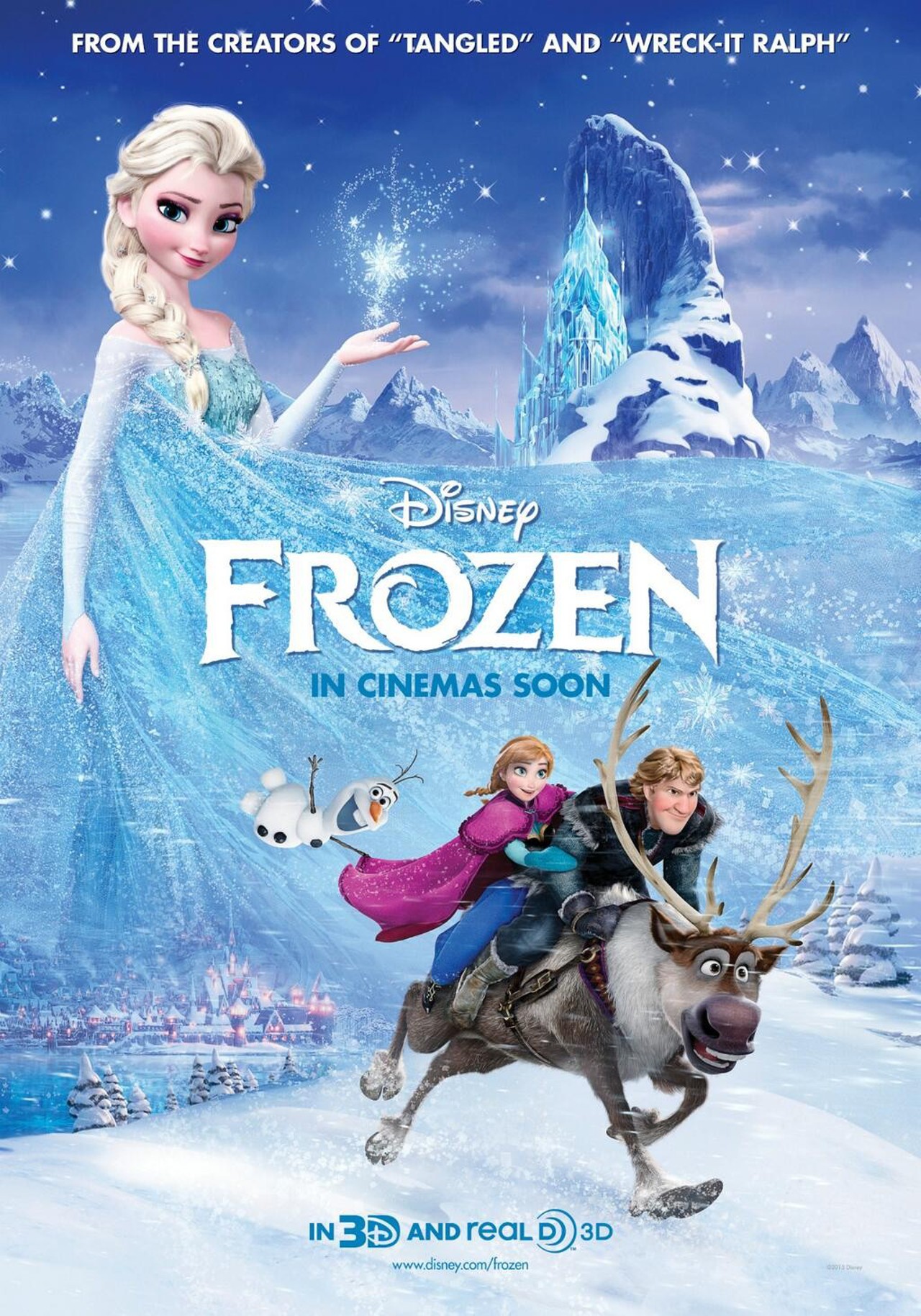Frozen charts
feminist territory and a the glimmer of a more enlightened view of people with disabilities for
Disney writes Maureen Shelley.
Despite the singing (I lost it when the snowman started warbling
a ballad to summertime),
Frozen is a
stand out in the Disney movie archives. The plot – loosely based on Hans
Christian Anderson’s
The Snow Queen –
has two beautiful young princesses face the requisite number of obstacles
before they discover the meaning of true love. So far, so Disney.
What’s different is that true love IS true love, the sisters
are agents of their own destiny, the issue of disability is taken out and
examined implicitly in a shockingly different way for Disney (more on that later) and the plot is intricate,
complex and engaging.
True love
For Disney true love has been, until this century, what we
in the real world call infatuation or lust. In Frozen, true love turns out to be the love that two people have for
each other and is based on years of relationship, shared memories, selflessness
and self –sacrifice. It is based on more than a few hours of acquaintanceship
or a single kiss. So not Disney.
Further, one of the beautiful princesses falls for a bad boy
who is prepared to kill her and her sister to win a kingdom for himself. The
princess sees the bad boy for what he is and doesn’t fall in love on the
rebound. Disney, it seems, has lost the plots on which it has relied for about
90 years.
Feminism
 |
| Peg-Leg Pete threatens Mickey (C) Disney |
Yes, these two princesses are beautiful, size 6, talented
(singers at least) and privileged. Yet, in Frozen
the young women get to do the rescuing as well as being rescued. They get to
make decisions for themselves and implement them. They order people about and
have their orders followed (I think that’s the princess bit but it’s a start).
These women do more than stand around singing.
Although the animators at Disney still have foot-in-mouth
disease where women are concerned (it’s hard to animate them, make them do
things and keep them “pretty” said one), at least Frozen sheds a glimmer of light on the equality of the sexes in Disney.
It doesn’t stretch to the women being plain, ordinary, lacking in privilege or,
you know, with a job or anything but it is progress.
Disability
Frozen was shown
in the session we attended with Get A
Horse – a short cartoon based on old footage, reworked for the digital age.
The villain in Get A Horse is Peg-Leg
Pete. Pete’s name is a dead giveaway – he’s a person with a disability. He’s
the only person with a disability in the cartoon and he’s the villain. He’s a
pretty nasty character and he has Mickey Mouse (voiced by Walt himself) to contend
with, so there are no prizes for guessing who wins the day. Mickey ensures that
Peg-Leg Pete, who is a would-be thief, is repeatedly injured by taking
advantage of his clumsiness that results from him only having one leg. Now,
apart from the unsympathetic treatment of Pete, Get A Horse is a nasty little story, so we won’t dwell on it.
However, it does show Disney’s (sometimes very unsympathetic) treatment of
characters with disabilities.
Disney has depicted a range of characters with disabilities in
Princess films over the years, namely
·
Seven men of short stature in Snow White (achondroplasia
or dwarfism is a recognised disability)
 |
| Ariel - The Little Mermaid (C) Disney |
·
Ariel in Little
Mermaid (at times she can’t walk and at others she can’t talk)
·
Aurora in Sleeping
Beauty (she’s in a coma for much of the film and may have brain injury)
·
the Beast in Beauty
and the Beast has a debilitating disease that causes dysmorphism or
physical malformations
·
Pocahontas believes she can talk to animals,
commune with spirits and understand unknown languages, which makes her a savant,
possibly on the autism spectrum or she may be delusional
·
Cross-dressing Mulan is very clumsy and may be
living with ataxia, a movement disability
·
Tiana in The
Frog and The Princess believes she turns into an animal. This may be
psychiatric therianthropy or delusions associated with schizophrenia.
·
Rapunzel in Tangled
clearly had a form of polycystic ovarian syndrome that resulted in excessive
hair growth
·
Merida’s mother Elinor from Tangled and her brothers Harris, Hubert and Hamish all turn into
bears – a similar dilemma to Tiana in The
Frog and The Princess. These may be just delusions created by drug abuse
but they also may be symptoms of mental illness.
These disabilities are usually “inflicted” on the characters
by a “wicked witch” or a “curse” and are often resolved (cured) at the end of
the film by true love (a different form of magic).
Yet it is in Frozen
that we see Elsa, the character with a disability that is both a “power” and a
“curse”, as being the subject of two very different treatments as a result of
her condition.
Elsa has a condition that makes things she touches become
frozen, which can be a good thing – she can create ice castles in the air – and
causes problems (she accidently puts ice into her sister’s brain).
 |
| Elsa the Good, (C) Disney |
Her parents’ response is to lock her away, to not let anyone
see her, to have her learn to control her emotions and to be a “good girl”. She
and her family become very isolated.
It reminded me of how families with children with
disabilities would put them in institutions, send them to special schools (we
don’t see how Elsa was schooled) and generally cut them off from mainstream
society. Both Elsa and her sister, Anna, suffer loneliness as a result of
Elsa’s isolation – much in the way that families with members who had a
disability did in the past.
Elsa runs away to the mountains and embraces her condition
and the power it gives her. Interestingly, when she does so, she becomes much
more womanly. She sheds her “good girl” clothes and walks with a wiggle; she
creates a beautiful palace and becomes more queen-like.
However, she is even more isolated than when she was shut in
a room by her parents. In her room she could talk through the door to her
sister or the servants. In the ice palace, she is alone except for the snowman
and a Yeti-like beast that she creates. Clearly, in the Disney cosmos,
disability is a reason to isolate people in the most extreme way.
Anna, when she learns of Elsa’s “power” (curse) wants to
investigate what can be done, she wants the condition out in the open and she
wants to use relationship to address it.
It seems odd to me that Elsa’s parents don’t ever try to get
help for her to learn to control her emotions (psychiatric treatment) so that
she can manage her condition. They seek advice from a troll when she is a child
but no further intervention is sought until she comes of age.
 |
| Elsa - the Snow Queen (C) Disney |
The intersection of sexuality and disability in Elsa’s life
is like a double threat and echoes the experience of many women with a
disability. The disability may be tolerated when they are children but when
they become women the disability needs to be dealt with more strictly. In
extreme situations (in real life) this has resulted in many women with
intellectual disability being sterilised. In Elsa’s case, she has to run away
to become a woman but is seen by some as a “monster”.
Anna works to get Elsa to return to the city so that it can
be removed from the permanent winter she accidently created by letting her
emotions loose. By Anna’s self-sacrifice – she takes an injury meant to kill
Elsa – Elsa’s heart melts and she is now able to control her condition. She
uses it to create beauty.
Through the self-sacrificing love of her sister, Elsa is
able re-join society, live in the city and be crowned queen. She is no longer
isolated, her condition is known to everyone and the people are indulgent of
her and proud of the way she uses her power to create beauty.
However, Elsa doesn’t win the ultimate Disney prize that of
a relationship with a man. Maybe, that is a stretch too far for even this new
21st century, Pixar-driven Disney universe.







